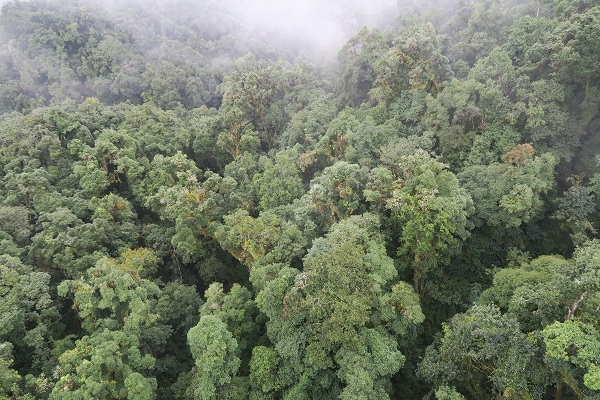Montane cloud forest (MCF) is generally characterized by persistent, frequent incidences of fog and low cloud cover at the canopy level, which usually harbors an abundant epiphyte community. To adapt to the water deficits, epiphytes was suggested to exhibit higher intrinsic water use efficiency (WUEi) than the ground-rooted plants. However, far too little attention has been paid to the quantitative relationship between the potential water sources and the WUEi among different groups of epiphytes.
In a study published in Water, researchers from Xishuangbanna Tropical Botanical Garden (XTBG) tried to quantify the water sources of different epiphyte groups in the dry season based on stable isotope techniques, and explore the intrinsic water use efficiency of various epiphyte groups in Ailaoshan montane cloud forest in SW China.
The researchers selected 12 dominant species belonging to four epiphyte groups (i.e., epiphytic lichens, epiphytic bryophytes, epiphytic ferns, and epiphytic seed plants) from Ailaoshan montane cloud forest to study their water use at the peak of the dry season.
They found that epiphytic lichens and epiphytic seed plants depended mainly on fog water, whereas the epiphytic bryophytes and epiphytic ferns relied on both fog water and humus. The contribution of fog water to the water sources could be as high as 83.2% in epiphytic lichens.
They also found significant differences in WUEi among epiphytic groups and species. The variation in WUEi was probably related to the differentiation of water resources and water use strategies.The clear differentiation of water utilization among epiphytes provides a possible explanation for their coexistence.
High fog dependence of epiphytes indicates that predicted declines in fog persistence due to climate change may negatively impact their performance and survival. The potential deterioration of epiphytes due to decreasing fog persistence may have cascading effects on the whole forest ecosystem. “Therefore, more conservation attention should be paid to epiphytes in montane forest ecosystems under climate change,” said Dr. SONG Liang of XTBG.
Contact
SONG Liang Ph.D
Key Laboratory of Tropical Forest Ecology, Xishuangbanna Tropical Botanical Garden, Chinese Academy of Sciences, Mengla, Yunnan 666303, China
E-mail: songliang@xtbg.ac.cn 
Montane cloud forest in SW Yunnan. (Image by SONG Liang)

